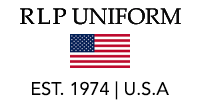

When it comes to adding a custom logo to your uniforms, you have two primary options: embroidery or printing.
Both methods have their unique benefits, but choosing the right one can make a significant difference in how your brand is perceived and how long your uniforms last.
So, how do you decide which is the best choice for your business? Let’s explore the benefits of embroidered versus printed logos on uniforms to help you make an informed decision.
Embroidered Logos: A Classic Choice with Lasting Impact
Embroidered logos have long been a popular choice for uniforms, and for good reason. This technique involves stitching the logo directly onto the fabric with colored threads, creating a three-dimensional effect that adds texture and depth.
Here are some key benefits of choosing embroidered logos:
1. Durability That Stands the Test of Time
One of the biggest advantages of embroidered logos is their durability. Since the logo is stitched directly into the fabric, it withstands heavy wear and tear, frequent washing, and exposure to the elements much better than printed designs.
This makes embroidered logos ideal for industries where uniforms are subjected to harsh conditions, such as construction, hospitality, or healthcare.
Imagine a hotel uniform with a beautifully embroidered logo that looks just as vibrant after months of use as it did on day one. This longevity not only keeps your team looking sharp but also saves money in the long run by reducing the need for frequent replacements.
2. A Premium, Professional Look
Embroidery is often associated with quality and professionalism.
The textured finish of an embroidered logo adds a touch of elegance and sophistication that printed logos can’t quite match. For businesses that want to project a high-end image or operate in industries where appearance matters—like corporate offices, hotels, or restaurants—embroidered logos are an excellent choice.
Think of embroidery as the tailored suit of the uniform world.
It conveys a sense of attention to detail and commitment to quality, making it perfect for client-facing roles where first impressions are everything.
3. Customization and Color Flexibility
With embroidery, you can achieve vibrant, multi-colored designs that stand out.
Embroidered logos can incorporate a wide range of colors and intricate patterns, allowing for greater customization.
Plus, the stitching itself creates a unique texture that can make your logo more visually appealing and distinctive.
Whether it’s a small logo on a polo shirt or a large design on a jacket, embroidery offers flexibility in placement and size while maintaining a high-quality appearance.
4. Suitable for a Variety of Fabrics
Embroidery works well on many different types of fabrics, including thicker materials like cotton, polyester, and denim.
It’s particularly effective on textured or heavier fabrics where printed logos might not adhere well or might fade over time.
So, if your uniforms are made from materials that require a sturdy, lasting logo application, embroidery is the way to go.
Printed Logos: Versatile and Cost-Effective
Printed logos, on the other hand, offer their own set of advantages that make them appealing for many businesses. This method involves applying ink directly onto the fabric, either through screen printing, heat transfer, or digital printing. Here’s why printed logos might be the best choice for your uniforms:
1. Affordability and Quick Turnaround
If you’re looking for a cost-effective option, especially for large orders, printed logos are often more affordable than embroidery.
The printing process is faster and requires less manual labor, which can reduce costs.
For businesses with budget constraints or those needing uniforms quickly, printed logos provide a practical solution.
For example, if you’re outfitting a large team for a seasonal event or campaign, printing allows you to produce a high volume of uniforms without breaking the bank.
2. High Detail and Complex Designs
Printed logos are ideal for designs with intricate details, gradients, or very fine text that might be challenging to reproduce with embroidery. Digital printing, in particular, can capture complex designs with precision and clarity, allowing for photo-quality images and detailed graphics.
Imagine a logo with a delicate script font or a multi-colored graphic with shading and gradients—printing can reproduce these details beautifully, making it perfect for designs where every detail matters.
3. Lightweight and Comfortable
Since printed logos are essentially part of the fabric itself, they don’t add any extra weight or bulk to the uniform. This can make a big difference for lightweight garments like t-shirts, athletic wear, or summer uniforms where comfort and breathability are key. The print lies flat against the fabric, ensuring a sleek and streamlined look.
This is especially beneficial in industries like fitness or retail, where employees are constantly on the move and need uniforms that allow for maximum flexibility and comfort.
4. Wide Range of Fabric Options
Printing works well on a broader range of fabrics, including lighter materials where embroidery might not be suitable. Whether it’s a moisture-wicking polyester shirt for a sports team or a soft cotton apron for a cafe, printed logos can adhere smoothly to the fabric and maintain their appearance over time.
Printing is also versatile in terms of application methods—screen printing for simple, bold designs, or heat transfer for smaller runs and more intricate artwork.
Choosing the Right Option for Your Business
So, which is better: embroidered or printed logos? The answer depends on your specific needs and priorities. If you’re looking for a durable, high-end appearance that conveys professionalism, and you’re working with heavier fabrics, embroidery is a fantastic choice. It’s perfect for businesses that want a polished and lasting look, such as corporate offices, hospitality, or healthcare.
On the other hand, if you need a cost-effective solution for high-volume orders, want to display complex designs with high detail, or require lightweight garments, printed logos might be the way to go. This option suits businesses like retail shops, event organizers, or fitness centers that prioritize affordability and design flexibility.
Why RLP Uniform is Your Best Choice for Custom Logo Uniforms
At RLP Uniform, we make adding your custom logo to uniforms easier than ever with our seamless online customization tool.
Our website allows you to upload your logo, choose between embroidery and printing, and see how it will look on various uniform styles—all from the comfort of your office or home.
Our team is still here to support you every step of the way, but our online platform gives you the freedom and flexibility to design uniforms that reflect your brand’s identity, whether you prefer the classic elegance of embroidery or the modern versatility of printed designs.
With RLP Uniform, bringing your vision to life has never been more convenient.
Frequently Asked Questions (FAQs)
1. What is the most durable option for logos on uniforms?
Embroidered logos are generally more durable because they are stitched directly into the fabric, making them ideal for uniforms that undergo heavy use or frequent washing.
2. Are printed logos suitable for all types of uniforms?
Printed logos work well on lightweight and smooth fabrics like cotton or polyester and are great for high-detail designs, but they may not be as durable on thick or textured materials.
3. Can I use both embroidered and printed logos on the same uniform?
Yes, combining both methods can provide a unique look, such as an embroidered logo on the chest and a printed design on the back.
4. How do I decide between embroidery and printing for my uniforms?
Consider factors such as durability, budget, design complexity, and fabric type. RLP Uniform’s team can help you choose the best option based on your specific needs.
5. How long do embroidered and printed logos last?
Embroidered logos tend to last longer due to their durability, while printed logos can also be long-lasting with proper care, especially when using high-quality printing techniques.

